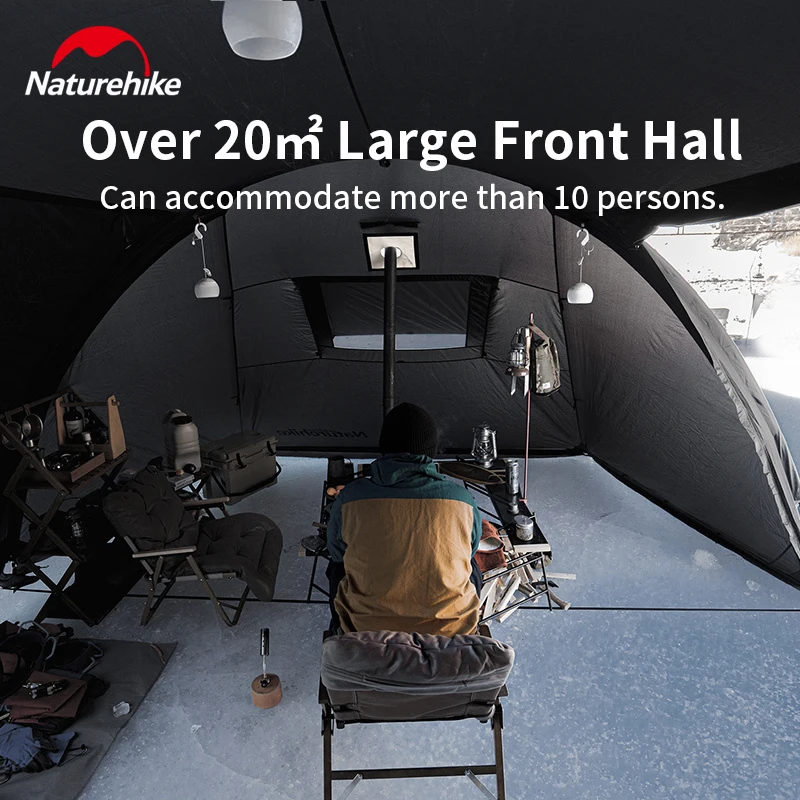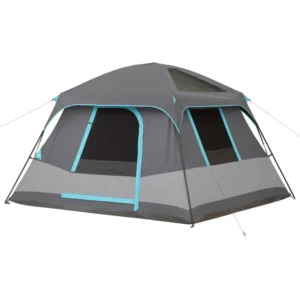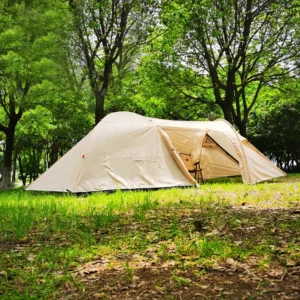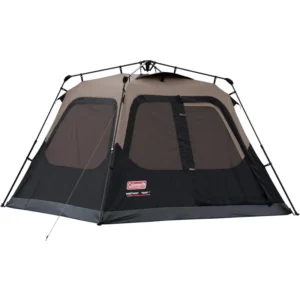Understanding the Appeal of Two-Room Tents
Two-room tents represent a significant step up from basic shelters, offering separate living spaces within a single structure. These tents feature an internal divider that creates two distinct areas, allowing campers to organize their space for different activities or provide privacy for multiple occupants.
The popularity of two-room tents stems from several key benefits:
- Enhanced privacy for families, couples, or groups sharing accommodations
- Better organization with dedicated areas for sleeping, changing, and storage
- Multi-functionality allowing simultaneous activities like sleeping and socializing
- Comfortable accommodation for families or groups without requiring multiple tents
Understanding different shelter options for two campers helps you make better decisions when shopping for your next outdoor accommodation. The layout and size of your tent directly impact your comfort level, convenience, and overall camping experience.
Different camping scenarios call for different tent configurations. A weekend trip with friends might benefit from a layout that maximizes communal space, while a week-long family vacation might prioritize separate sleeping quarters and storage areas. The key advantages of two-room family tents become particularly evident when camping with children who need earlier bedtimes or when weather conditions keep you tent-bound for extended periods.
Essential Two-Room Tent Layouts: Finding Your Perfect Configuration
How your two-room tent is arranged affects everything from traffic flow to privacy levels. The layout determines who can move around without disturbing others, how gear is organized, and even how well the tent stands up to weather. The most thoughtfully designed two-compartment tents consider these practical aspects while maximizing comfort.
Let’s explore the most common configurations and how they might meet your specific camping needs.
Side-by-Side Layout: Equal Spaces for Equal Needs
This configuration features two rooms positioned next to each other, typically separated by a vertical divider. The layout creates equal-sized spaces that share a similar footprint, usually around 8 × 10 feet (2.4 × 3 m) per room.
Pros:
– Creates truly equal spaces (perfect for two couples or families sharing)
– Typically offers door access to each room independently
– Generally provides similar light and ventilation to both spaces
– More compact footprint than end-to-end designs
Cons:
– Usually results in a wider tent that may require more open camping space
– Can limit standing room if the peak height isn’t centered over both rooms
– May require more poles and complex setup than simpler designs
Tunnel Layout: End-to-End Organization
The tunnel layout arranges rooms in sequence from front to back, creating an elongated footprint. These tents typically measure around 8 × 16 feet (2.4 × 4.9 m) and feature distinct zones that naturally separate sleeping and living activities.
Pros:
– Creates clear separation between front “living” area and rear sleeping space
– Often more weather-resistant due to aerodynamic design
– Typically includes a vestibule at the front for gear storage
– Makes efficient use of poles and materials
Cons:
– Back room usually requires walking through the front room to exit
– May be harder to fit into smaller campsites due to length
– Often provides less standing height in the back room
Modern two-room camping tent designs continue to refine this popular layout to enhance functionality without sacrificing stability.
Vis-à-Vis Layout: Face-to-Face with Central Living Space
This innovative design features two sleeping areas positioned opposite each other with a shared central living space. The typical footprint is squarer at roughly 12 × 12 feet (3.7 × 3.7 m), creating a communal center with “wings” for sleeping.
Pros:
– Maximizes communal space in the center area
– Creates excellent separation between sleeping quarters
– Often features higher ceiling height in the central area
– Provides superior privacy compared to other layouts
Cons:
– More complex setup with additional poles and attachment points
– Larger overall footprint requires more space at campsite
– Usually heavier than simpler layouts
– Can be challenging to set up in windy conditions
Cabin Style with Removable Divider: Adaptable Spaces
The cabin-style layout features near-vertical walls creating a box-like structure with an optional divider that can create two rooms or be removed for one large space. These tents typically measure around 10 × 10 feet (3 × 3 m) with generous headroom throughout.
Pros:
– Highly adaptable space that changes with your needs
– Excellent headroom throughout the entire tent
– Simple to convert between one large room and two separate spaces
– Maximizes usable interior space due to vertical walls
Cons:
– Less stable in high winds compared to lower-profile designs
– Divider typically offers less sound privacy than permanent walls
– Usually heavier and bulkier when packed
– Generally more expensive due to complex pole structure
Critical Size Factors: Beyond Basic Dimensions
When evaluating tent size, looking solely at the manufacturer’s stated capacity (like “6-person tent”) often leads to disappointment. Understanding what size tent is good for 2 people can help you extrapolate for larger groups. Most campers find they need to “size up” from the manufacturer’s rating to achieve comfortable accommodations.
A more thorough assessment considers multiple dimensions and how they translate to real-world comfort:
Floor Area and Usable Space
The total floor dimensions only tell part of the story. For genuine comfort, consider:
Actual usable space: Interior walls, sloping sides, and support poles reduce the functional area. A 10 × 8 foot (3 × 2.4 m) tent might only offer about 75 square feet (7 square meters) of usable space after accounting for these reductions.
Per-person requirements: For comfortable sleeping, adults typically need 25-30 square feet (2.3-2.8 square meters) each, while children need 15-20 square feet (1.4-1.9 square meters). This calculation helps explain why a “6-person” tent often comfortably fits only 3-4 adults.
Sleeping arrangement impacts: Standard sleeping bags require about 2.5 × 6.5 feet (0.8 × 2 m) per person, while queen air mattresses need approximately 5 × 7 feet (1.5 × 2.1 m) of unobstructed floor space.
Many experienced campers discover that a 2-person tent actually isn’t big enough for two adults with gear, especially for trips longer than a weekend. The same principle applies to larger tents – always consider your gear storage needs when calculating space requirements.
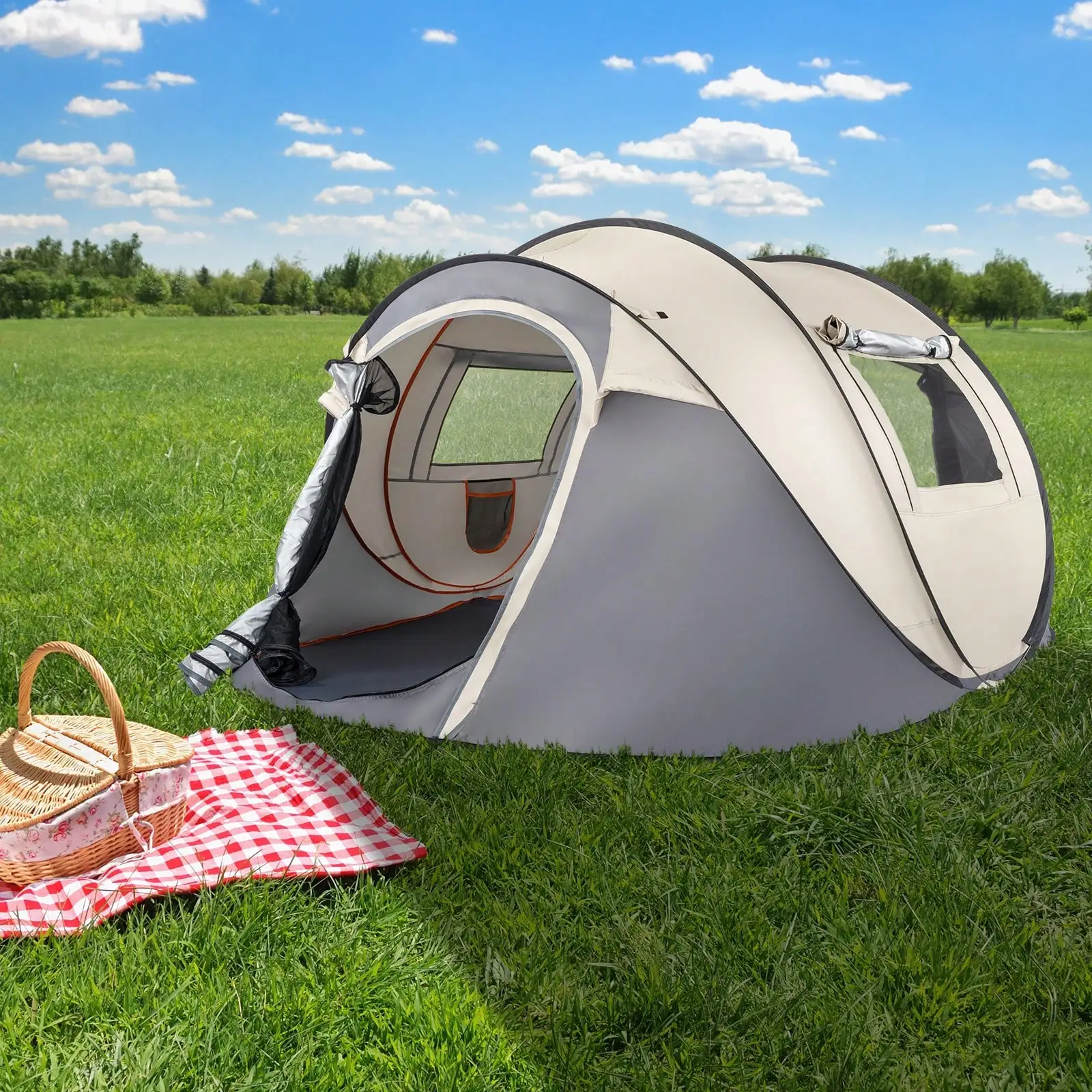
Height and Volume: The Vertical Dimension
Tent height significantly impacts comfort but is often overlooked. Key considerations include:
Peak height: This measures the highest point inside the tent, typically 6-7 feet (1.8-2.1 m) in family-sized two-room tents. However, this height is usually only available in a small area.
Wall slope: Steeper walls create more usable space. Cabin-style tents with near-vertical walls offer substantially more usable volume than dome tents with the same floor area.
Height distribution: Some designs provide good headroom throughout, while others offer standing height only in the center. Tall stand-up camping tents provide generous vertical space, making changing clothes and moving around much more comfortable.
Ceiling features: Interior pockets, gear lofts, and lantern hooks require adequate height to be useful without creating hazards.
Packed Size and Weight Considerations
Two-room tents necessarily involve trade-offs between living space and portability:
Packed dimensions: Most two-room tents pack down to a size around 25-30 inches (63-76 cm) in length and 10-12 inches (25-30 cm) in diameter.
Weight variations: Weights typically range from 15 pounds (6.8 kg) for minimalist designs to over 35 pounds (15.9 kg) for full-featured cabin models.
Transportation factors: Consider how you’ll transport the tent. Car camping allows for bulkier, heavier options, while walk-in sites might necessitate more portable designs.
Setup requirements: Larger tents often require more than one person for setup. Consider whether you’ll consistently have help available.
Key Features Affecting Layout and Livability
Beyond basic dimensions, specific features dramatically impact how comfortable and functional your two-room tent will be. Understanding these elements helps you evaluate how well different models will serve your needs.
Room Dividers: Privacy and Flexibility
The divider between rooms largely determines how effectively the space functions as two separate areas:
Partial dividers: These typically extend from ceiling to floor but don’t completely seal the rooms. They provide visual privacy but limited sound isolation.
Full dividers: These create complete separation with zippered doorways between rooms, maximizing privacy.
Removable designs: These offer the flexibility to configure the tent as one large space or two separate rooms as needed.
Material variations: Options range from lightweight mesh (maximizing airflow but minimizing privacy) to solid fabric (maximizing privacy but potentially restricting ventilation).
The effectiveness of room separation is particularly important when two-room tents transform camping privacy for mixed groups or families with children.
Door and Window Placement
The location and design of access points significantly impact functionality:
Multiple doors: Separate entrances for each room prevent disturbing sleeping occupants and create better traffic flow.
Door orientation: Doors on opposite sides allow for better ventilation and easier access from different parts of your campsite.
Window positioning: Windows placed at different heights and on multiple walls maximize light and ventilation options.
Privacy features: Look for windows with covers that can be closed from inside for changing clothes or sleeping late.
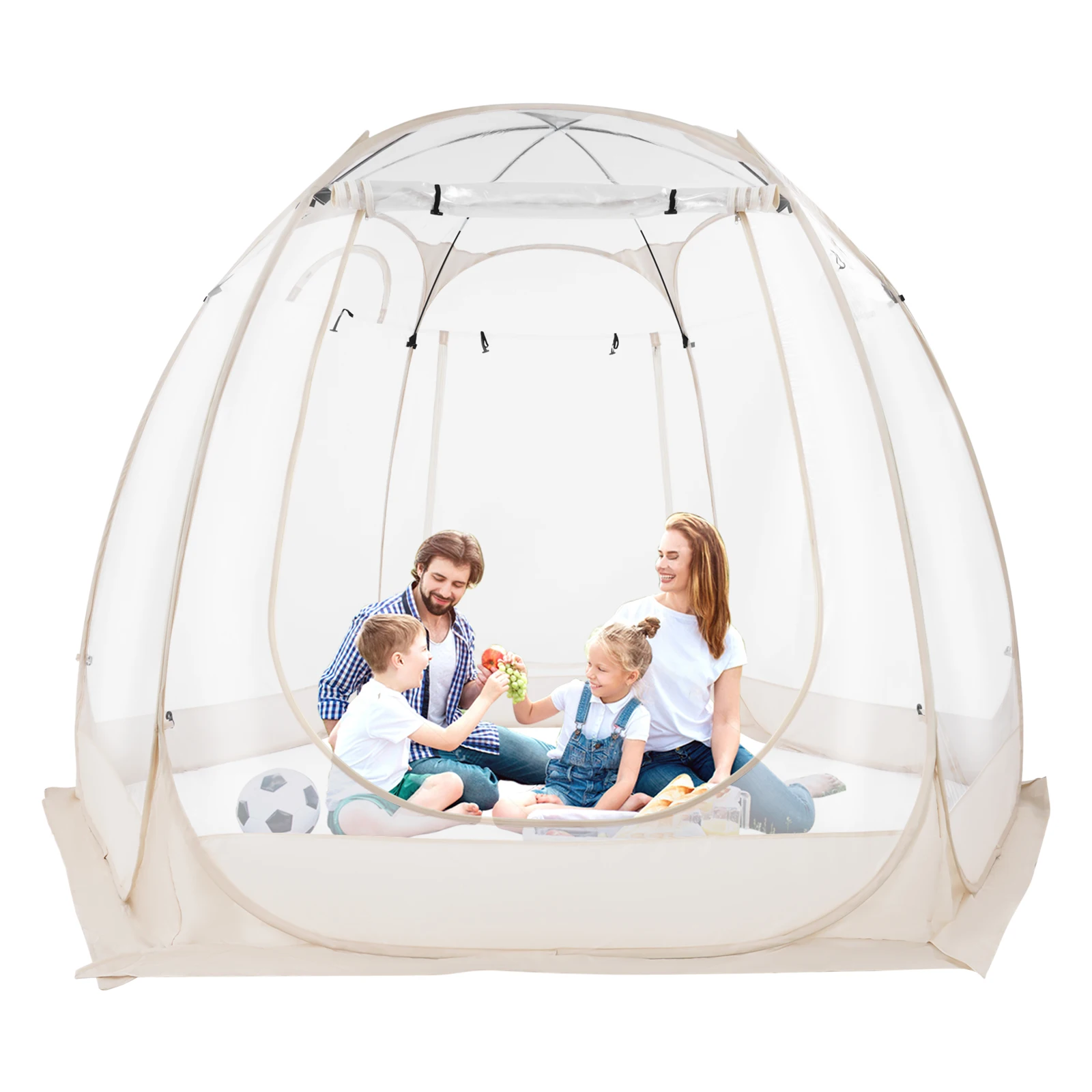
Ventilation Systems and Weather Protection
Two-room tents present unique ventilation challenges and opportunities:
Cross-ventilation: Multiple doors and windows allow for effective airflow management.
Room-specific ventilation: The ability to control airflow separately in each room accommodates different temperature preferences.
Seasonal adaptability: Look for options to close off mesh panels during colder weather or open up maximum ventilation during summer heat.
Rain protection: Extended rainflies that cover windows and doors while still allowing them to remain open for ventilation are particularly valuable.
Quality waterproof camping tents balance protection from elements with adequate airflow to prevent condensation, a common issue in multi-room shelters.
Comparing Two-Room Tent Configurations for Specific Needs
Different camping scenarios call for different tent configurations. The ideal tent for a family with young children differs from what works best for two couples sharing accommodations. Understanding the uses of two-room tents for group camping can help match features to your specific situation.
Family Camping: Privacy and Togetherness
Families with children have unique tent requirements:
Room allocation: Parents typically prefer one room with children in the adjacent space. Vis-à-vis layouts work well for families with older children who want more privacy.
Sound considerations: Fabric dividers provide visual privacy but limited sound isolation. For families with young children, proximity can be beneficial for monitoring.
Space distribution: Families often benefit from allocating the larger room (if sizes differ) to children who need play space during inclement weather.
Access planning: Consider nighttime bathroom trips – young children may need a configuration where they can exit without disturbing parents, or vice versa.
The most family-friendly layouts typically provide enough separation for different sleep schedules while maintaining easy communication between rooms.
Group Camping: Balancing Shared and Private Space
When unrelated adults or multiple couples share accommodations:
Privacy prioritization: Full-height dividers with zippered doors become more important for adult groups.
Access independence: Multiple exterior doors allow occupants to enter and exit their spaces without disturbing others – nearly essential for unrelated adults.
Space equality: Side-by-side layouts with similar room dimensions ensure fairness when splitting costs and space.
Communal area: Vis-à-vis designs with central living spaces excel for groups wanting to socialize while still having private sleeping areas.
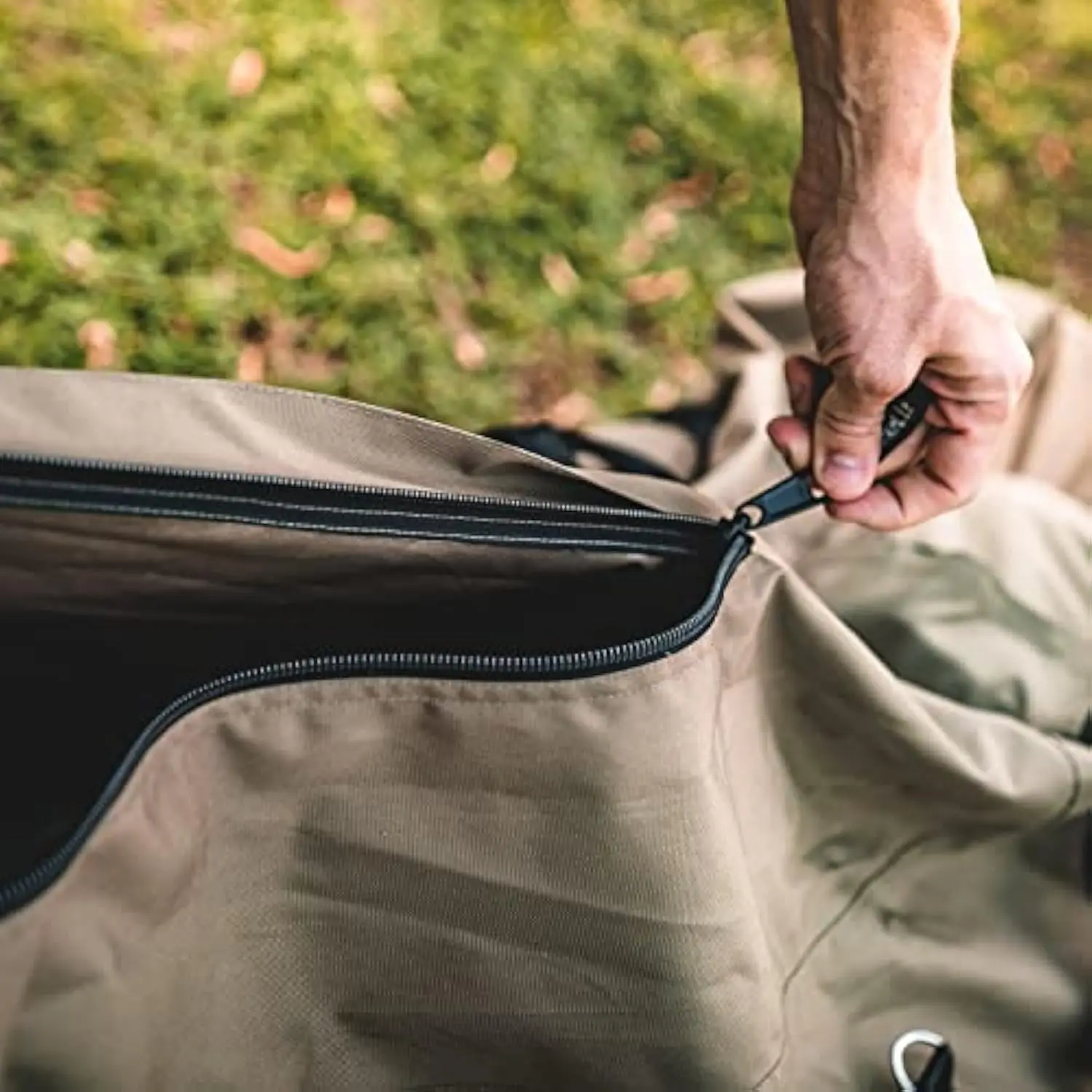
Extended Stays: Comfort for the Long Haul
For trips lasting more than a weekend, certain features become particularly valuable:
Standing room: Full standing height throughout much of the tent becomes increasingly important as trip length increases.
Organization options: Look for abundant pockets, gear lofts, and attachment points for hanging items.
Weather versatility: Extended rainflies, adjustable ventilation, and storm-ready construction become critical for longer stays where weather changes are likely.
Livable space ratio: The proportion of floor space that offers full headroom becomes more important for extended use.
Easy setup camping tents reduce frustration for longer trips where you might set up and take down camp multiple times as you change locations.
Tall / Stand Up Camping Tent, Two Room Camping Tent
$407.93 Select options This product has multiple variants. The options may be chosen on the product pageCompact Backpacking Tent, Lightweight Backpacking Tent, Waterproof Camping Tent
$335.52 Select options This product has multiple variants. The options may be chosen on the product pageCamping Tent with Vestibule, Waterproof Camping Tent
Price range: $407.89 through $479.48 Select options This product has multiple variants. The options may be chosen on the product page- $476.52 Select options This product has multiple variants. The options may be chosen on the product page
Backpacking Tent with Vestibule, Trekking Pole Backpacking Tent, Waterproof Camping Tent
Price range: $271.99 through $519.52 Select options This product has multiple variants. The options may be chosen on the product pageEasy Setup Camping Tent, Instant Camping Tent
Instant Cabin Tent Double Layer Canvas 1-Minute Setup Spacious Family Camping Shelter with Air Vents$308.10 Select options This product has multiple variants. The options may be chosen on the product page
Weather Considerations: Protection in Different Conditions
Different layouts offer varying levels of weather resilience:
Wind performance: Lower-profile tunnel designs typically handle wind better than tall cabin styles. However, cabin designs with quality guy-out points can be adequately stabilized in moderate conditions.
Rain management: Tents with vestibules provide protected entry during rainfall and space for wet gear storage.
Temperature control: Models with abundant mesh and multiple ventilation points perform better in hot weather, while designs with less mesh and closable vents retain warmth better in cooler conditions.
Seasonal appropriateness: Three-season tents balance ventilation and protection for spring through fall use, while four-season designs prioritize stability and heat retention for winter camping.
Making Your Final Decision: Practical Selection Guidance
With so many factors to consider, choosing the ultimate compact shelter for two or a larger group requires a systematic approach. Use these guidelines to narrow your options and find the perfect two-room tent.
Prioritizing Your Needs: Layout or Size First?
Consider which factors are non-negotiable for your camping style:
If privacy is your top priority: Focus first on layouts with full-height dividers and separate entrances, then evaluate size options within those designs.
If accommodating specific gear is essential: Start with size requirements (particularly for air mattresses or cots), then look for layouts that efficiently use that space.
If adaptability matters most: Prioritize designs with removable dividers and multiple configuration options, allowing your tent to evolve with your needs.
If extreme weather is likely: Consider weather resistance first, as tunnel designs typically offer better performance in challenging conditions.
Remember that no tent excels in every category. Identify your three most important criteria and focus on those when making your final decision.
Evaluating Quality and Value
Two-room tents represent a significant investment, so quality assessment is crucial:
Seam construction: Look for reinforced, taped, or welded seams, particularly at stress points and where water might pool.
Pole material: Aluminum poles typically offer better strength-to-weight ratio than fiberglass, though at a higher cost.
Rainfly coverage: Full-coverage flies provide better protection than partial flies but may reduce ventilation.
Zipper quality: Smooth-operating, snag-resistant zippers with storm flaps indicate attention to detail.
Warranty coverage: Better tents typically come with more comprehensive warranties, reflecting manufacturer confidence.
Higher price often (but not always) correlates with better materials, more thoughtful design, and longer lifespan. Consider the frequency of use when determining your budget – occasional campers might opt for more affordable options, while regular adventurers benefit from investing in premium construction.
Testing Before Purchase: What to Check
Whenever possible, examine tents in person before purchasing:
Set it up: If the store allows, practice setting up the tent to assess complexity and stability.
Check the divider: How substantial is it? Does it create genuine separation or merely symbolic division?
Test the doors: Operate all zippers and closures to check for smooth function and quality construction.
Examine ventilation: Look for mesh panels, adjustable vents, and options for airflow control.
Assess headroom: Stand inside and move around to check usable space, not just peak height.
Verify packed size: Consider whether the packed tent will fit in your vehicle and storage space at home.
For online purchases, carefully read the specifications and look for detailed reviews from users with similar needs to yours.
Frequently Asked Questions About Two-Room Tent Layouts and Sizes
Is a Two-Room Tent Worth the Extra Cost and Setup Time?
Yes, for most family and group camping scenarios. While two-room tents typically cost 30-50% more than comparable single-room models and take 5-10 minutes longer to set up, the added privacy, organization options, and versatility justify the investment for trips longer than a quick overnight stay.
Can a Two-Room Tent Be Used Effectively by Solo Campers or Couples?
Yes, with specific benefits. Solo campers and couples can use the second room for gear storage, as a changing area, or as a sheltered outdoor living space with the divider removed. The extra space particularly shines during extended stays or inclement weather when being “tent-bound” is more likely.
What’s the Most Versatile Two-Room Layout for Changing Group Sizes?
Cabin-style tents with removable dividers offer maximum adaptability. These designs convert easily between one large space and two separate rooms, accommodating everything from family trips to couple weekends with friends. Look for models with multiple doors and adjustable ventilation to enhance flexibility.
How Much Extra Time Should I Allow for Setting Up a Two-Room Tent?
Plan for 15-30 minutes for initial setup, depending on the design complexity and your experience level. Tunnel and side-by-side layouts typically set up faster than vis-à-vis or cabin styles with complex pole structures. Mastering two-person lightweight tent setup techniques can help you become more efficient, even with larger shelters.

